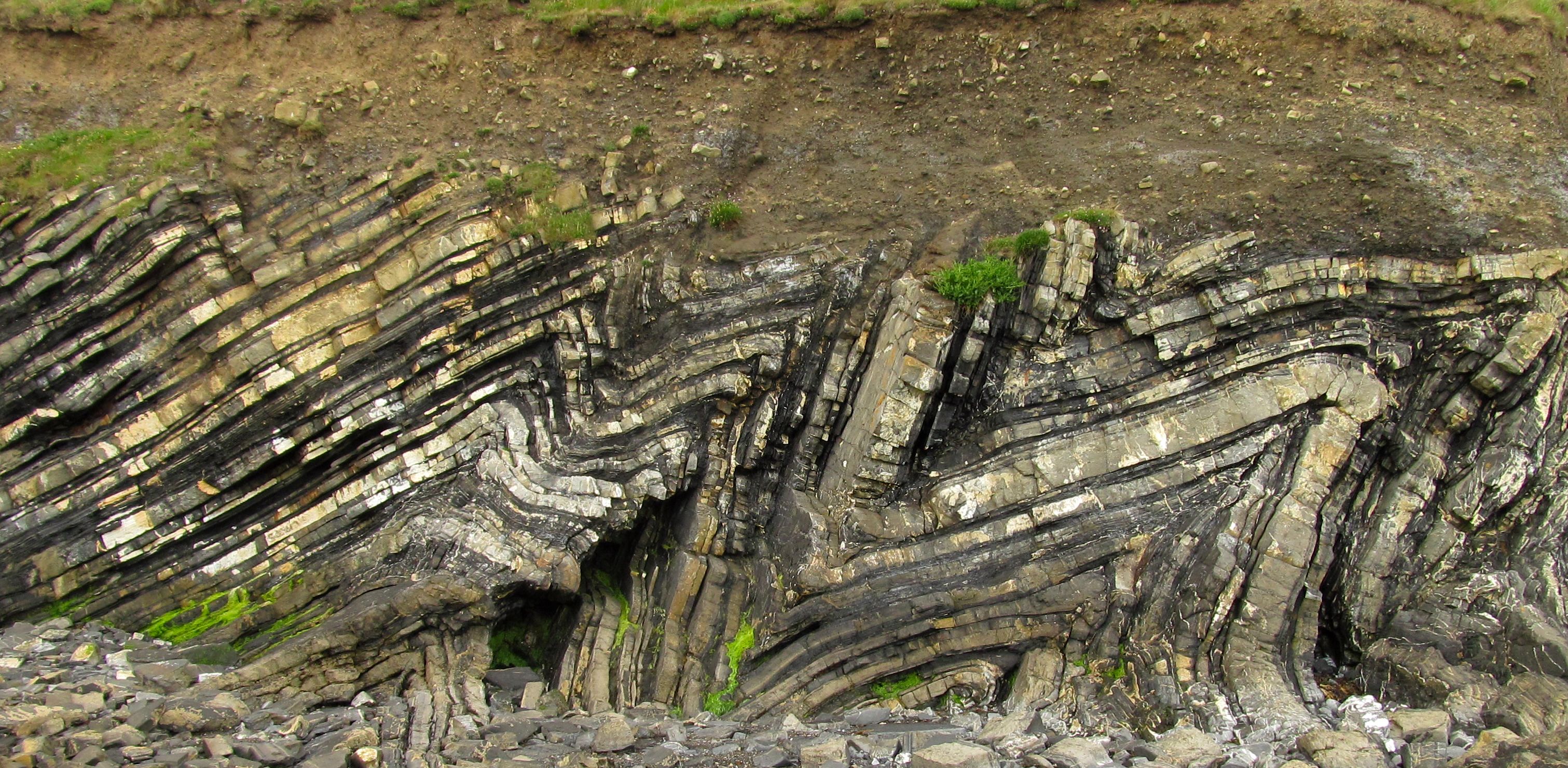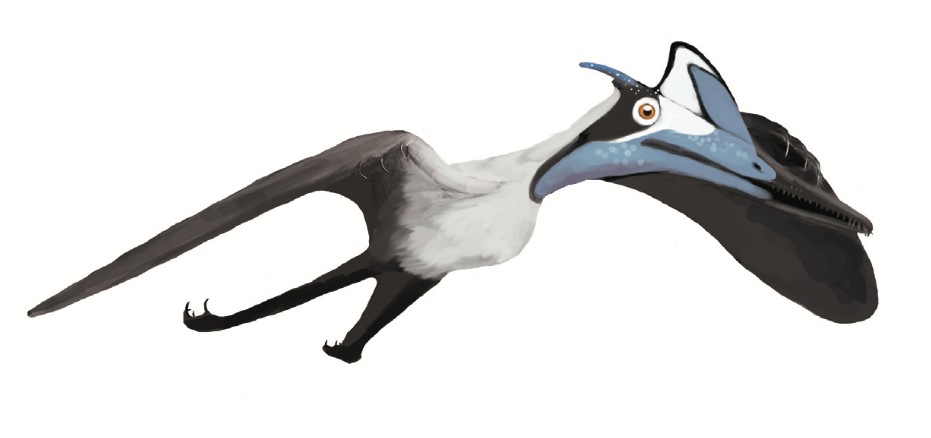|
Intertrappean Beds
The Intertrappean Beds are a Late Cretaceous and early Paleogene geologic unit in India. These beds are found as interbeds between Deccan Traps layers, including the slightly older Lameta Formation. They consist a number of different subgroups and formations, and span the Cretaceous–Paleogene boundary. Many mostly fragmentary fossils, especially of small vertebrates, are known from the formation. Indeterminate theropod and pterosaur remains have been recovered from the formation, as well as dinosaur eggs.Weishampel, et al. (2004). "Dinosaur distribution." Pp. 517-607. The mammal genera '' Deccanolestes'', '' Sahnitherium'', '' Bharattherium'', '' Indoclemensia, Indotriconodon'' and'' Kharmerungulatum'' have been recovered from several localities. The Early Eocene-aged Bamanbor locality in Gujarat preserves articulated freshwater fish specimens. A rich plant flora is known from the formation. Stratigraphy Although often thought of as a contemporaneous unit that was for ... [...More Info...] [...Related Items...] OR: [Wikipedia] [Google] [Baidu] |
Geologic Unit
A stratigraphic unit is a volume of rock of identifiable origin and relative age range that is defined by the distinctive and dominant, easily mapped and recognizable petrographic, lithologic or paleontologic features (facies) that characterize it. Units must be ''mappable'' and ''distinct'' from one another, but the contact need not be particularly distinct. For instance, a unit may be defined by terms such as "when the sandstone component exceeds 75%". Lithostratigraphic units Sequences of sedimentary and volcanic rocks are subdivided on the basis of their shared or associated lithology. Formally identified lithostratigraphic units are structured in a hierarchy of lithostratigraphic rank, higher rank units generally comprising two or more units of lower rank. Going from smaller to larger in rank, the main lithostratigraphic ranks are bed, member, formation, group and supergroup. Formal names of lithostratigraphic units are assigned by geological surveys. Units of formatio ... [...More Info...] [...Related Items...] OR: [Wikipedia] [Google] [Baidu] |
Interbedding
In geology, interbedding occurs when beds (layers of rock) of a particular lithology lie between or alternate with beds of a different lithology. For example, sedimentary rocks may be interbedded if there were sea level variations in their sedimentary depositional environment. Intercalation is a special case of interbedding where a layer is variably inserted into an already existing sequence; or where two separate depositional environments in close spatial proximity migrate alternately across the contact. While interbedding has layers that are horizontally flat (or aligned with the angle of the entire stratum), intercalated rock on the other hand has slanted layers that streak through each other (even when it aligns with the stratum). For example intercalated conglomerate and sandstone looks like ripples of different material networked through each other somewhat off the horizontal, as the beds are deposited in a gradient. This is likely due to differing fluvial conditions an ... [...More Info...] [...Related Items...] OR: [Wikipedia] [Google] [Baidu] |
Bamanbore
Bamanbore is a town in Surendranagar district of Gujarat, India. Geography It is located at at an elevation of 184 m above MSL. Location National Highway 8B ends at Bamanbore. Start and end point of National Highways Nearest airport is Rajkot Airport Rajkot Airport is a public airport serving the city of Rajkot, Gujarat, India. It is operated by the Airports Authority of India (AAI). It was the 4th busiest airport in Gujarat after Ahmedabad, Surat and Vadodara until all scheduled commerci .... References External links About BamanboreSatellite map of Bamanbore Cities and towns in Surendranagar district {{Surendranagar-geo-stub ... [...More Info...] [...Related Items...] OR: [Wikipedia] [Google] [Baidu] |
Kharmerungulatum
Kharmerungulatum is an extinct genus of herbivorous mammal from the Late Cretaceous (Maastrichtian) Intertrappean Beds of Madhya Pradesh, India. Its specific epithet honors Leigh Van Valen. It was described as one of the earliest known condylarths Condylarthra is an informal group – previously considered an order – of extinct placental mammals, known primarily from the Paleocene and Eocene epochs. They are considered early, primitive ungulates and is now largely considered to be a wast .... References Prehistoric eutherians Cretaceous mammals Extinct animals of India Prehistoric mammal genera Fossil taxa described in 2007 {{cretaceous-mammal-stub ... [...More Info...] [...Related Items...] OR: [Wikipedia] [Google] [Baidu] |
Indotriconodon
''Indotriconodon magnus'' is an extinct mammal from the Late Cretaceous of India. A eutriconodont, it represents the geologically youngest of the group dating to the Maastrichtian just a few thousand years before the KT event (a record previously held by '' Alticonodon lindoei'' from the Campanian of Canada), as well as a relatively large sized Mesozoic mammal. Description ''Indotriconodon magnus'' is known only from a single lower molar. It is about 20% smaller than that of ''Repenomamus giganticus'' but larger than that of other eutriconodonts, making it a badger-sized mammal. Phylogeny In its 2024 description it nests deeply within Eutriconodonta, being sister taxa to Volaticotherini. Palaeoceology Found in the Intertrappean Beds, it co-existed with at least other ten mammal genera as well various squamates, turtles and dinosaur Dinosaurs are a diverse group of reptiles of the clade Dinosauria. They first appeared during the Triassic Geological period, period ... [...More Info...] [...Related Items...] OR: [Wikipedia] [Google] [Baidu] |
Bharattherium
''Bharattherium'' is a mammal that lived in India during the Maastrichtian (latest Cretaceous) and possibly the Paleocene. The genus has a single species, ''Bharattherium bonapartei''. It is part of the gondwanathere family Sudamericidae, which is also found in Madagascar and South America during the latest Cretaceous. The first fossil of ''Bharattherium'' was discovered in 1989 and published in 1997, but the animal was not named until 2007, when two teams independently named the animal ''Bharattherium bonapartei'' and ''Dakshina jederi''. The latter name is now a synonym. ''Bharattherium'' is known from a total of eight isolated fossil teeth, including one incisor and seven molariforms ( molar-like teeth, either premolars or true molars). ''Bharattherium'' molariforms are high, curved teeth, with a height of . In a number of teeth tentatively identified as fourth lower molariforms (mf4), there is a large furrow on one side and a deep cavity (infundibulum) in the middle of the toot ... [...More Info...] [...Related Items...] OR: [Wikipedia] [Google] [Baidu] |
Sahnitherium
''Sahnitherium'' is a possible basal Euarchontan from the Maastrichtian of the Intertrappean Beds of Andhra Pradesh, India. It may be closely related to '' Deccanolestes.'' The holotype A holotype (Latin: ''holotypus'') is a single physical example (or illustration) of an organism used when the species (or lower-ranked taxon) was formally described. It is either the single such physical example (or illustration) or one of s ... is an upper molar, and it is the only specimen of ''Sahnitherium''. References Prehistoric eutherians Cretaceous mammals Extinct animals of India Prehistoric mammal genera Fossil taxa described in 2003 {{cretaceous-mammal-stub ... [...More Info...] [...Related Items...] OR: [Wikipedia] [Google] [Baidu] |
Deccanolestes
''Deccanolestes'' is a scansorial, basal Euarchontan from the Late Cretaceous (Maastrichtian) and Paleocene Intertrappean Beds of Andhra Pradesh, India. It may be closely related to ''Sahnitherium''. ''Deccanolestes'' has been referred to Palaeoryctidae in the past, but recent evidence has shown that it is either the most basal Euarchontan, as the earliest known Adapisoriculid, or as a stem-afrotherian. Species ''Deccanolestes hislopi'' is based on an isolated first upper molar (VPL/JU/NKIM/10). A third molar, a lower third premolar, various other isolated teeth, and some postcranial remains have been referred to it. ''Deccanolestes robustus'' is based on an isolated lower first molar. Isolated teeth and some ankle remains have also been referred to it. ''Deccanolestes narmadensis'' is based on an isolated rear molar. Alongside ''Bharattherium ''Bharattherium'' is a mammal that lived in India during the Maastrichtian (latest Cretaceous) and possibly the Paleocene. The gen ... [...More Info...] [...Related Items...] OR: [Wikipedia] [Google] [Baidu] |
Dinosaur Egg
Dinosaur eggs are the organic vessels in which a dinosaurs, dinosaur embryo develops. When the first scientifically documented remains of non-avian dinosaurs were being described in England during the 1820s, it was presumed that dinosaurs had laid egg (biology), eggs because they were reptiles. In 1859, the first scientifically documented dinosaur egg fossils were discovered in France by Jean-Jacques Poech, although they were mistaken for giant bird eggs (birds were not yet recognized as dinosaurs at the time). The first scientifically recognized non-avian dinosaur egg fossils were discovered in 1923 by an American Museum of Natural History crew in Mongolia. Dinosaur eggshell can be studied in thin section and viewed under a microscope. The interior of a dinosaur egg can be studied using CAT scans or by gradually dissolving away the shell with acid. Sometimes the egg preserves the remains of the developing embryo inside. The oldest known dinosaur eggs and embryos are from ''Masso ... [...More Info...] [...Related Items...] OR: [Wikipedia] [Google] [Baidu] |
Pterosaur
Pterosaurs are an extinct clade of flying reptiles in the order Pterosauria. They existed during most of the Mesozoic: from the Late Triassic to the end of the Cretaceous (228 million to 66 million years ago). Pterosaurs are the earliest vertebrates known to have evolved powered flight. Their wings were formed by a membrane of skin, muscle, and other tissues stretching from the ankles to a dramatically lengthened fourth finger. There were two major types of pterosaurs. Basal pterosaurs (also called 'non-pterodactyloid pterosaurs' or ' rhamphorhynchoids') were smaller animals with fully toothed jaws and, typically, long tails. Their wide wing membranes probably included and connected the hind legs. On the ground, they would have had an awkward sprawling posture, but the anatomy of their joints and strong claws would have made them effective climbers, and some may have even lived in trees. Basal pterosaurs were insectivores or predators of small vertebrates. Later pte ... [...More Info...] [...Related Items...] OR: [Wikipedia] [Google] [Baidu] |
Theropod
Theropoda (; from ancient Greek , (''therion'') "wild beast"; , (''pous, podos'') "foot"">wiktionary:ποδός"> (''pous, podos'') "foot" is one of the three major groups (clades) of dinosaurs, alongside Ornithischia and Sauropodomorpha. Theropods, both extant and extinct, are characterized by hollow bones and three toes and claws on each limb. They are generally classed as a group of saurischian dinosaurs, placing them closer to sauropodomorphs than to ornithischians. They were ancestrally carnivorous, although a number of theropod groups evolved to become herbivores and omnivores. Members of the subgroup Coelurosauria and possibly some other or all theropods were covered in feathers. In the Jurassic, birds evolved from small specialized coelurosaurian theropods, and are currently represented by about 11,000 living species, making theropods the only group of dinosaurs alive today. Theropods first appeared during the Carnian age of the late Triassic period ... [...More Info...] [...Related Items...] OR: [Wikipedia] [Google] [Baidu] |



